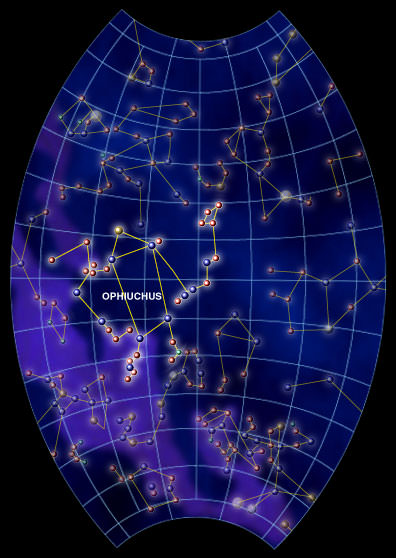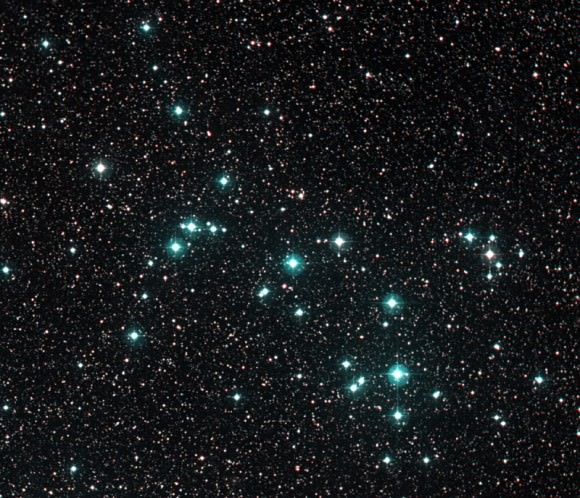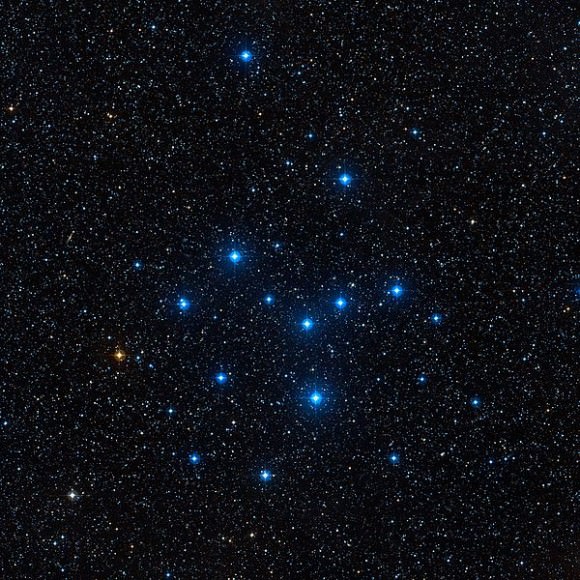Hey, Kids! Did you see the crescent of the Moon last night? With the heat and humidity much higher in the northern hemisphere, it looked wonderfully like a cool slice of orange cantaloupe hung in the sky! If you’re looking for something cool to do, then why not get out your binoculars and try a little star gazing? We’ve visited with a lot of different sky characters and it’s time to learn more. Whenever you’re ready, it’s time to head out into the dark shadows and listen to the voices on the wind…
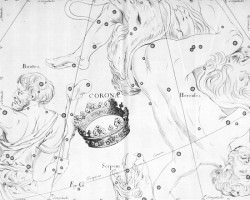 “As night falls, it’s time to look for more royalty in the sky as we locate Corona Borealis – the “Northern Crown” – whose faint main stars form a semicircular arc. Guarded by Hercules on one side and Bootes on another, some tales call it the royal crown of Dionysus. Why not? It’s brightest star’s name is Gemma. But, during the summer, why not think of it as the Native Americans once did? They believed Corona Borealis to be a campfire circle!”
“As night falls, it’s time to look for more royalty in the sky as we locate Corona Borealis – the “Northern Crown” – whose faint main stars form a semicircular arc. Guarded by Hercules on one side and Bootes on another, some tales call it the royal crown of Dionysus. Why not? It’s brightest star’s name is Gemma. But, during the summer, why not think of it as the Native Americans once did? They believed Corona Borealis to be a campfire circle!”
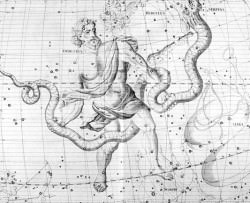 “As you gather around our celestial campfire, let’s talk about the constellation of Ophiuchus. Many believe it to be the thirteenth constellation of the zodiac because it resides mainly on the ecliptic plane – the imaginary path the Sun and Moon takes across the sky. Some legends see Ophiuchus as the “Serpent Bearer” and picture him as holding a huge serpent in either hand – the constellations of Serpens and Serpens Caudia. However, there are more tales to be told about Ophichus!
“As you gather around our celestial campfire, let’s talk about the constellation of Ophiuchus. Many believe it to be the thirteenth constellation of the zodiac because it resides mainly on the ecliptic plane – the imaginary path the Sun and Moon takes across the sky. Some legends see Ophiuchus as the “Serpent Bearer” and picture him as holding a huge serpent in either hand – the constellations of Serpens and Serpens Caudia. However, there are more tales to be told about Ophichus!
The ancient Egyptians believed this large set of stars to be the incarnation of Imhotep. One of Imhotep’s legend was that of a doctor and it is often said that he introduced the art of healing and medicines to mankind. If you take a look at today’s modern medical symbol, you’ll see a large serpent! The snake symbol was also used to represent Imhotep.
Using your binoculars and our constellation guide to Ophiuchus, see if you can find a great cluster of Imhotep’s stellar jewels listed as NGC 6633. It takes up about as much area of sky as the full Moon and it is bright enough to be seen with even small binoculars. The light you see from it tonight left 660 million years ago!”
If you check out the Rho star, a triple, sort of a boat shape with a telescope, you will find, a beautiful blue reflection nebula, listed as IC 4665 that is sometimes known as the “The Fish Spear of Poseidon”.
“Does Ophiuchus look like a snake charmer to you? Or an ancient Egytian?”
Always be sure to pick a safe place to observe and let your parents know where you’ll be. Why not ask them to join you?! After all, you’ve got a lot of wonderful stories and plenty of “star sense” to share!

